Booth Etiquette 101
Companies spend a fortune attending trade events each year, so getting the most out of them is just smart. We believe that the way to truly to get the most out of a show is by leaving a positive, memorable impression on the attendees, press, partners, investors and vendors because the alternative can seriously sully a brands reputation.
Over the last twenty or so years, we’ve seen some really interesting booth behaviors and we’re highlighting five of the worst on our list not to do as exhibiting staff.
5 BAD EXHIBITOR BEHAVIORS THAT REFLECT POORLY ON A BRAND
- Ignoring attendees, especially when the booth is empty
- People in business are similar to consumers as we are all people and no one likes to be blown off. We’ve seen potential clients and even worse, clients with meetings walk away from a booth for being completely ignored by exhibit staff and higher ups. This is a no brainer, we know, but we see it all too often.
- Everyone is a customer and potential brand ambassador… No matter whether you're in sales, marketing, PR or set in an area to just do demo’s… everyone is an influencer - treat them like they are golden, be genuine, and your brand reputation will shine much brighter.
- Misrepresenting brand
- Exhibitors aren’t the only ones spending time and money to be at a show, attendees are too, and they expect to speak with knowledgable people in the booths of the brands they know and love. Sending out untrained staff to just “wing it” is one of the most common bad behaviors we see on show floors and it's a surefire way to misrepresent your brand.
- All booth staff should have unified communication front and know about new product launches, current programs, key brand points, and be able to answer any attendee questions/concerns or be able to find someone who can.
- Becoming too personal with attendees and press
- Being real is great. However when you're at a show to represent a company, it’s crucial to distinguish the difference between being genuine and being too personal. Remember booth staff are there to represent the brand…
A few examples we're referring to:- Talking about a hangover or antics from the night before. No attendee wants to hear this and it becomes a direct association with the company for them.
Who wants the reputation of, "They hire unprofessional staff..."? - Sharing with attendees that you're exhausted and can’t wait for the show to be over. Again, they're excited to be there, so you should be too!
- Talking about a hangover or antics from the night before. No attendee wants to hear this and it becomes a direct association with the company for them.
- Being real is great. However when you're at a show to represent a company, it’s crucial to distinguish the difference between being genuine and being too personal. Remember booth staff are there to represent the brand…
- Using smart phones
- Look no further for the best way to disengage with your show audience. We can't stress enough how important it is to stay off your phones in the booth. It’s as simple as walking outside of the perimeter or going into a meeting room but don’t hang out on your phone in the booth, it shows you don't care about being there and neither does the company you represent.
- Being an unwanted house guest
- Coming to the show knowing you have a role is key, even if it's just participating in meetings. Becoming an unwanted houseguest for a show manager and brand means that an individual comes to the show unprepared and unwilling to serve in the role they were sent to serve.
- Unwanted house guests are often late. Disrespecting the show schedule can really hurt the leads, sales, PR, and analyst opportunities. If you are scheduled to work the booth, be on time and do the job you were sent to do.
- If you are a wanted house guest but have someone replace you, make sure you have explained your role and that the replacement is a compatible and capable cover, otherwise they may quickly become unwanted.
We’ll just leave you with this, if you want to create a real brand, remember it’s all about the relationship with your internal influencers and external audiences. What you do and say, matters.






